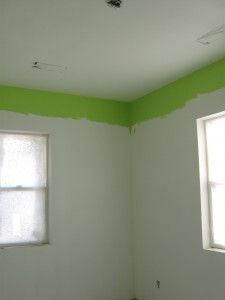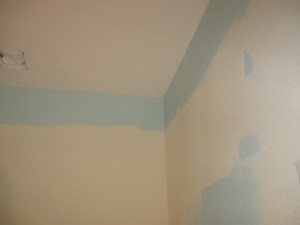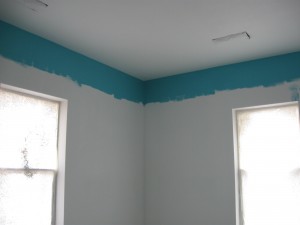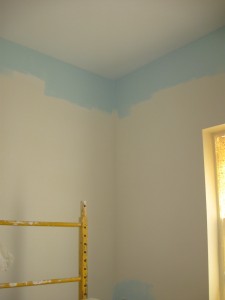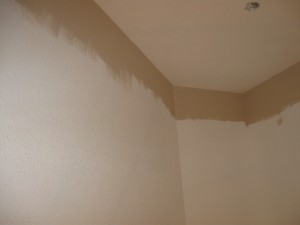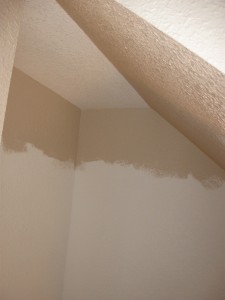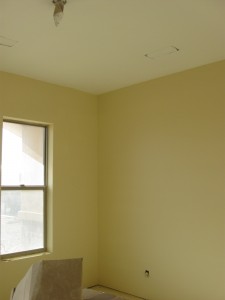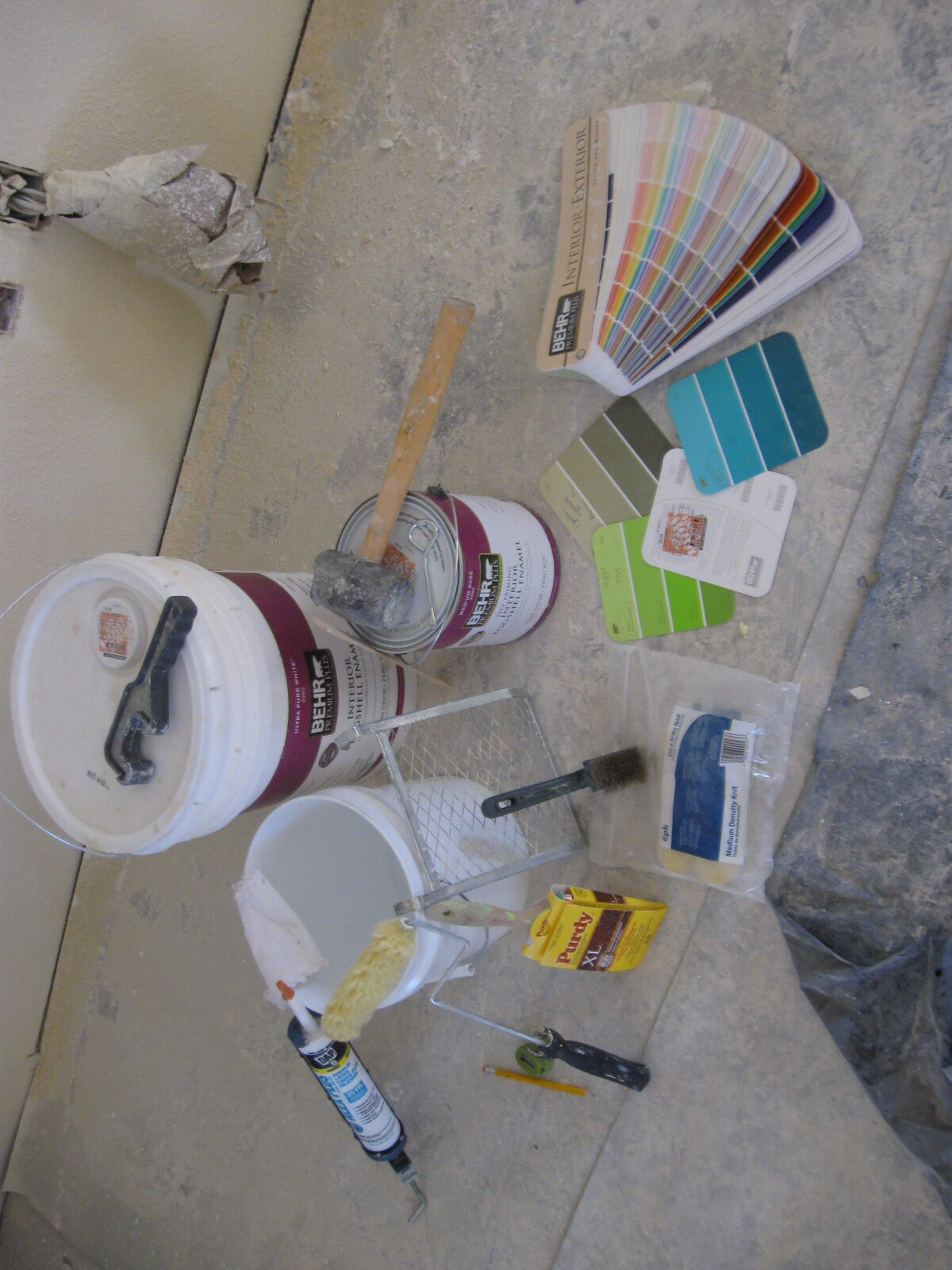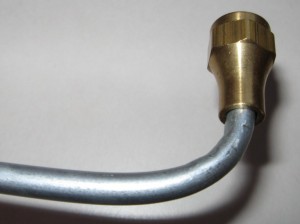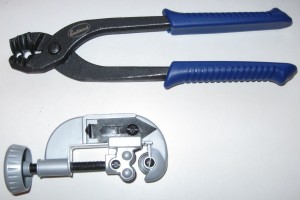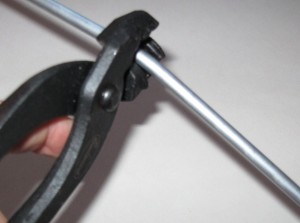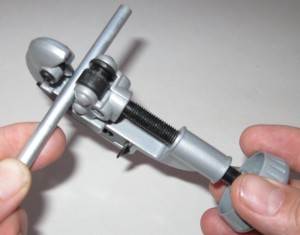Now that the entire house is primed, we are preparing for the rest of the paint project. However, here are a few tips about the priming phase:
1: Especially when using a big pump sprayer, you will want to dilute the paint a bit for priming. To do this, you need a couple of empty 5-gallon buckets (no problem, since we did our own mudding and taping). Using the buckets, you will add 2 gallons of water for each 5 gallon bucket of primer. You will pour the water and paint back and forth, mixing the paint and water until you get a uniform consistency. This is a traditional painter method called “boxing”. In the old days, when paint colors were not mixed so precisely as they are today, painters would do this with the paint to assure a uniform color when working on a job. It is still a useful technique for today’s equipment and products…
2. The primer needs to be backrolled for good coverage after spraying. We used a very large roller on a long pole to get this done efficiently. The roller costs about $20, but is worth it in the time saved. You can wrap it well in plastic if you need to pause between priming sessions. This big roller takes a lot of work to clean, so wrapping it is a welcome time-saver.
3. Another tip: Even if you are buying the plain white paint, have them mix it for you at the store before you buy it. Saves you the time of mixing and assures the complete and even mix you want.
4. Preparing for spraying the entire house. Obviously, all doors and windows must be well masked. We used a roll of painter’s plastic for all the big areas, including windows, doors, wood pillars, etc. We also used tar paper to cover the entire floor before we mudded and taped, so it was ready to go for painting. Since this was the priming phase, we used regular masking tape on windows, etc. For painted surfaces, use the blue tape later on; the regular masking tape can sometimes pull off the paint when you remove it. We used brown paper to mask all the electrical outlets, can lights, light boxes, vents, etc. This will lessen the cleanup later.
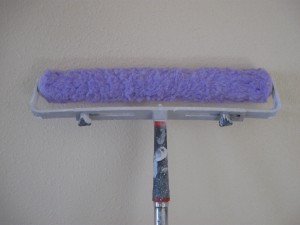
Since we want our ceilings to remain white, instead of buying regular wall paint for the second coat – Behr’s Premium Plus ($125/5 gal), our painter friend recommended Behr’s primer ($50/5 gal) instead. He noted that Behr’s primer is not a completely flat white, but has a bit of sheen to it. He wouldn’t recommend this in areas likely to see high humidity (bathrooms), or kitchens or in homes with smokers. We decided to do this, since it looks great and will work fine in most of the house. Just a little note: Although they aren’t accustomed to doing it very often, primer paint can be tinted like any other paint. Our friend said that people have used primer paint (tinted to their color choice) for the entire house, walls and ceilings and had good results. It won’t hold up against heavy wear, so it would never work for us on the walls, but maybe for some folks.
Preparing for the Second Coat (color)
Getting all the equipment you need will help. Here is an array of the basics:

You’ll need:
1. Good 3″ brushes for cutting in
2. A small wire brush to clean the brushes well between uses (this really helps get the brushes looking like new)
3. At least a couple of 2 gallon plastic buckets (sold in most hardware stores)
4. 2 gallon size bucket grids (or screens) to use with the 2 gallon buckets
5. 6″ mini rollers and roller frames (these fit well in the 2 gallon buckets)
6. Good pencils and sharpener
7. All purpose caulk
8. Painters’ cloths (for the caulking and for wiping drips or mistakes when painting — keep them moist)
9. Paint, stir sticks, openers, bucket opener for the 5 gallon buckets
Note: When you buy your tinted paint, ask for an extra printed label with the exact ratio of the tints needed for your paint. Stick it to the back of a color card and keep it in your records. If you ever need to buy more for touch up, etc., they will be able to match it exactly.
Cutting in: Recommended on seams between colors (like between a white ceiling and colored wall): run a bead of caulk to get a nice, clean line. No matter how precise you are with a brush, the raised surface of the texture keeps the line from looking completely straight without caulk. We tried it both ways. When I have a strong wall color, I found the caulking absolutely essential for a nice look. To keep your caulk from drying out between uses, a small electrical cap works very well.
Even for the main color, some thinning is a good idea. Rule of thumb: 3 quarts of water added to a 5 gallon bucket. A little less than 2 1/2 cups of water can be added to single gallon cans. I pour the gallon can into the 2 gallon plastic bucket, add the water to the paint can, close it up and shake it well to get as much paint mixed in as possible. Then, add the water mixture to the bucket and mix well, returning the diluted paint to the paint bucket after mixing.
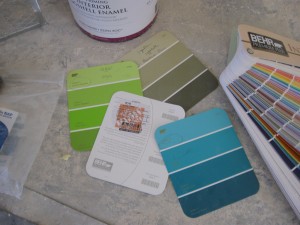
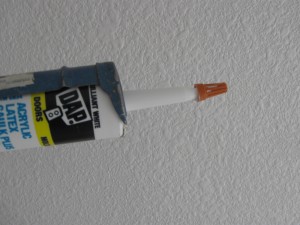
After the caulk has dried (about 2 hrs, in my experience), use a nice pencil to mark the corner line. Then, using a 3″ high quality paint brush (angled or flat as you prefer), cut in the paint along the line. Using a small roller, carry the color down about 1 foot from the ceiling to allow ease of spraying without risk of overspray.
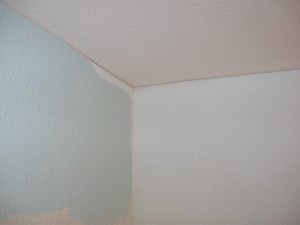
Here are a few photos of the cut-in walls, ready for spraying:
